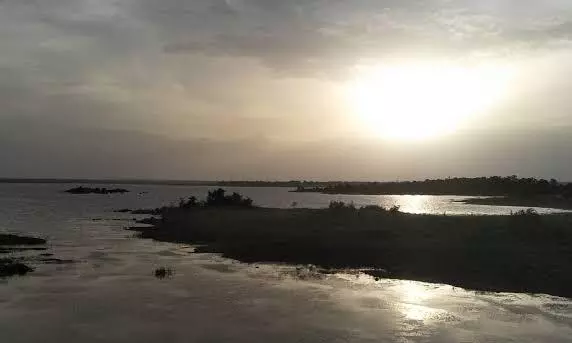Falling Water Levels in Reservoirs Likely to Pose Challenges

Hyderabad: The summer is likely to pose serious challenges with respect to water management, with all reservoirs already reporting severely to moderately depleted water levels.
The situation at some of these reservoirs on the two major rivers – Krishna and Godavari – or those served by some of the smaller rivers, indicates that unless the catchment areas of these rivers – primarily in Maharashtra, Karnataka and Madhya Pradesh – receive good rains in time during the monsoon, the situation in Telangana state could get worse.
For instance, in the two major bellwether reservoirs, Nagarjunasagar and Srisailam, the amount of water on February 22 this year was 143.51 tmc ft, and 38.57 tmc ft, compared to 216.66 tmc ft and 46.75 tmc ft on the same date last year. One thousand million cubic feet of water equals the water that the Hussainsagar can hold.
Incidentally, though the country as a whole in 2023 received what the Indian Meteorological Department said was 94 per cent of the long period average (LPA), it also said this was less average LPA with actual average rainfall of 820 mm, against the LPA of 868.6 mm.
In the peninsula, the actual rainfall was 659 mm against the LPA of 716.2 mm, while the central region received 981.7 mm of rain against the LPA of 978 mm, the IMD had said in its end of the 2023 monsoon season report.
In its report for the 2022 monsoon, the IMD had said the peninsula and central regions received 106 per cent of the LPA.
With no inflows after the peak of the monsoon last year, the reservoirs in the state are expected to see further depletion of levels in the coming weeks and months.

